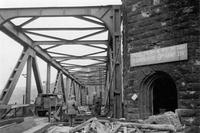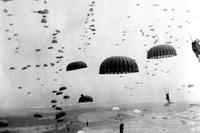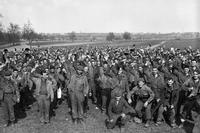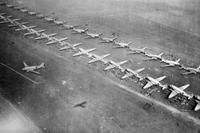OMAHA BEACH, France — The June 6, 1944, D-Day invasion of Nazi-occupied France was unprecedented in scale and audacity, using the largest-ever armada of ships, troops, planes and vehicles to punch a hole in Adolf Hitler's defenses in western Europe and change the course of World War II.
With veterans and world dignitaries gathering in Normandy to commemorate the 80th anniversary of the landings, here's a look at some details about how the operation unfolded.
Who took part
Nearly 160,000 Allied troops landed in Normandy on June 6, 1944. Of those, 73,000 were from the United States and 83,000 from Britain and Canada. Forces from several other countries were also involved, including French troops fighting with Gen. Charles de Gaulle.
The Allies faced around 50,000 German forces.
More than 2 million Allied soldiers, sailors, pilots, medics and other people from a dozen countries were involved in the overall Operation Overlord, the battle to wrest western France from Nazi control that started on D-Day.
Read Next: Unprotected: Troops Spent Decades Elbow-Deep in Dangerous Chemicals to Keep Nuclear Missiles Working
Where and when
The sea landings started at 6:30 a.m., just after dawn, targeting five code-named beaches: Utah, Omaha, Gold, Juno, Sword. The operation also included actions inland, including overnight parachute landings on strategic German sites and U.S. Army Rangers scaling cliffs to take out German gun positions.
Around 11,000 Allied aircraft, 7,000 ships and boats, and thousands of other vehicles were involved.
Victims on all sides
A total of 4,414 Allied troops were killed on D-Day itself, including 2,501 Americans. More than 5,000 were wounded.
In the ensuing Battle of Normandy, 73,000 Allied forces were killed and 153,000 wounded. The battle — and especially Allied bombings of French villages and cities — killed around 20,000 French civilians.
The exact German casualties aren’t known, but historians estimate between 4,000 and 9,000 men were killed, wounded or missing during the D-Day invasion alone. About 22,000 German soldiers are among the many buried around Normandy.
Survivors
Inevitably, the number of survivors present at major anniversary commemorations in France continues to dwindle. The youngest survivors are now in their late 90s. It's unclear how many D-Day veterans are still alive. The U.S. Department of Veterans Affairs says it doesn't track their numbers.























